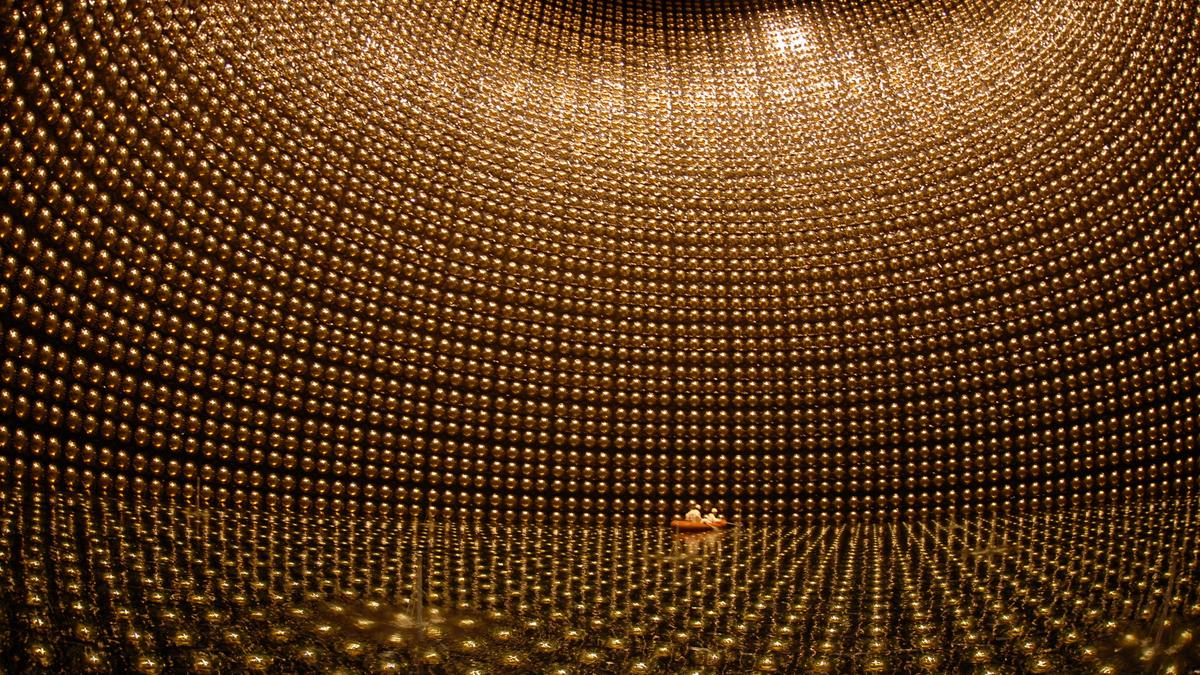Science
Major Study Unveils Insights into Neutrinos, Universe’s Ghost Particles

A groundbreaking study combining data from two significant neutrino experiments in Japan and the United States has provided new insights into the elusive particles known as neutrinos. Published on October 22, 2025, in the journal Nature, this research enhances our understanding of these fundamental particles, which play a critical role in the cosmos.
Neutrinos are incredibly small particles that rarely interact with matter, making them challenging to study. They are produced in high-energy environments, such as the core of the sun and during supernovae explosions, and travel through space at nearly the speed of light. Trillions of neutrinos pass through our bodies every second without detection.
The study draws on nearly a decade of observational data from the T2K experiment in Japan and the NOvA experiment in the United States. Together, these experiments have made significant advancements in measuring the differences in mass between the three types, or “flavors,” of neutrinos.
Understanding Neutrino Oscillation and Mass Differences
The T2K experiment sends a beam of neutrinos approximately 185 miles (295 km) from its source in Tokai, Japan, to a detector in Kamioka. In contrast, the NOvA experiment transmits a neutrino beam about 500 miles (810 km) from the Fermi National Accelerator Laboratory near Chicago to Ash River, Minnesota. Both facilities are investigating the phenomenon known as neutrino oscillation, where neutrinos change from one flavor to another as they travel.
Research conducted by physicists, including Kendall Mahn from Michigan State University, confirmed that the results of both experiments are compatible, advancing the field of neutrino studies. The study’s findings reveal the mass gap between two of the three neutrino types with a remarkable accuracy of less than 2% uncertainty, marking one of the most precise measurements recorded to date.
Implications for Understanding the Universe
Grasping the nature of neutrinos is vital for addressing some of the universe’s most profound mysteries, including the dominance of matter over antimatter and the elusive properties of dark matter and dark energy. According to Zoya Vallari, a physicist from Ohio State University, the study may shed light on why the universe is primarily composed of matter despite the expectation that matter and antimatter would have existed in equal amounts after the Big Bang.
As scientists continue to explore neutrino behavior, they are also examining whether neutrinos and their counterparts, antineutrinos, oscillate in similar ways. This line of inquiry could provide further insights into fundamental questions about the universe’s composition.
Looking ahead, the field of neutrino research is poised for significant expansion. New experiments, such as the DUNE project led by Fermilab in Illinois and South Dakota and the Hyper-Kamiokande initiative in Japan’s Gifu Prefecture, are underway. These efforts, along with the ongoing JUNO project in China and space-based observatories like KM3NeT and IceCube, aim to deepen our understanding of these elusive particles.
Mahn notes, “Neutrinos have unique properties, and we are still learning a lot about them.” This latest study is a crucial step toward unraveling the mysteries that neutrinos hold, paving the way for future discoveries in the world of particle physics.
-

 World3 months ago
World3 months agoSBI Announces QIP Floor Price at ₹811.05 Per Share
-

 Lifestyle3 months ago
Lifestyle3 months agoCept Unveils ₹3.1 Crore Urban Mobility Plan for Sustainable Growth
-

 Science3 months ago
Science3 months agoNew Blood Group Discovered in South Indian Woman at Rotary Centre
-

 Sports3 months ago
Sports3 months agoBroad Advocates for Bowling Change Ahead of Final Test Against India
-

 World3 months ago
World3 months agoTorrential Rains Cause Flash Flooding in New York and New Jersey
-

 Top Stories3 months ago
Top Stories3 months agoKonkani Cultural Organisation to Host Pearl Jubilee in Abu Dhabi
-

 Science3 months ago
Science3 months agoNothing Headphone 1 Review: A Bold Contender in Audio Design
-

 Top Stories3 months ago
Top Stories3 months agoAir India Crash Investigation Highlights Boeing Fuel Switch Concerns
-

 Sports3 months ago
Sports3 months agoCristian Totti Retires at 19: Pressure of Fame Takes Toll
-

 Business3 months ago
Business3 months agoIndian Stock Market Rebounds: Sensex and Nifty Rise After Four-Day Decline
-

 Politics3 months ago
Politics3 months agoAbandoned Doberman Finds New Home After Journey to Prague
-

 Top Stories3 months ago
Top Stories3 months agoPatna Bank Manager Abhishek Varun Found Dead in Well









